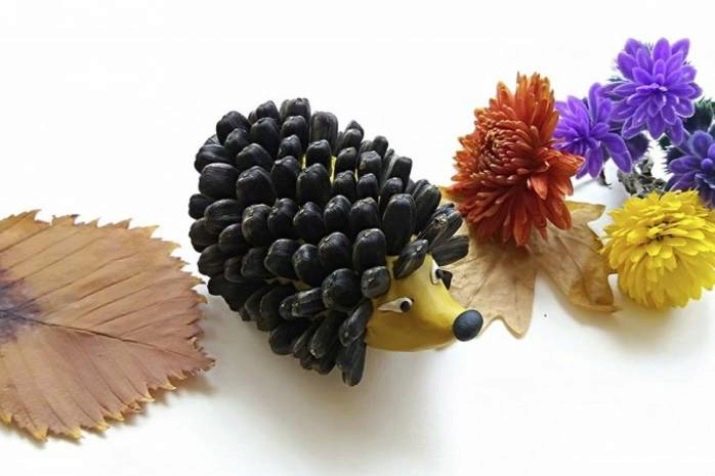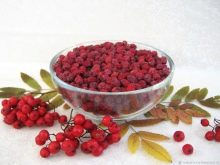Crafts from plasticine and natural material

"If you want to raise good kids, spend half your money and twice the time on them."
Esther Selsdon
It is pleasant and useful to spend time with your child for an interesting, exciting activity - creating crafts from plasticine. In addition to plasticine, various natural materials are used, which can be collected for a walk on a weekend. Thus, you can get a double pleasure: recreation with children in nature and joint creativity at home.


How to make a hedgehog?
For young children, working with plasticine is very useful - fine motor skills of the hands develop the child's brain. The smallest can be offered the simplest exercises, for example, roll plasticine in the form of a ball, sausage or pancake. They will quite cope with the task of making a bun, parents will only have to finish the eyes, nose and mouth.


Also, with a little help from parents, you can make a hedgehog:
- for this you need to roll two balls, one larger for the body and one smaller for the head;
- make a lot of small balls for needles;
- then connect, give the head a slightly elongated look, stick the eyes, nose and needles on the body;
- plasticine needles can be replaced with seeds or needles.



The most primitive hedgehog is ready.

It's also easy to make a hedgehog if you have a pine cone at home. The process is simplified as the bump will replace the hedgehog's torso. You just need to attach a head, nose and plasticine legs to it.
It is very easy to make a hedgehog from half a walnut shell. The legs, head, nose and needles molded from plasticine are attached to the shell. For stability, you can fill the shell inside with plasticine.

You can supplement the hedgehog figurine with a sculpted apple or mushroom, or put a real small ranetka or mushroom on top.
Squirrel making
Blinding a squirrel is a little more difficult work. For this, plasticine is taken in red, white and black. The body and tail are molded from the redhead - blanks in the form of a cylinder, a head in the form of a ball, four legs - sausages. You will need white plasticine to make the breast and cheeks, and black plasticine for the nose and eye.
In order to shape the head, you need to attach the ears with tassels. Attach the black nose, eyes and white cheeks. Cover the front part of the body with white plasticine - this will be the breast. Then connect all the parts, glue the joints well.

You can simplify the work by reusing cones and acorns. An elongated bump can serve as both a torso and a tail, and acorns will replace legs. You can make a head from a smaller round cone. It remains to sculpt the paws, roll up small balls for the nose and the peephole.

Working with the use of natural materials at hand, firstly, simplifies the process, and secondly, develops imagination and creativity.
More ideas
To find any material for crafts, just look into the kitchen cabinets or go outside, take a walk in the forest, go to the river, or, if possible, take a walk along the seashore. Ornamental material literally lies under your feet, you just need not be lazy, collect it and make wonderful figures with your own hands.


What natural materials can be useful for work?
Vegetable
- Dry leaves (it is better to collect them in the fall and dry under a press), twigs, stems, sticks, flowers and dead plants.
- Seeds of trees and shrubs, cones, acorns, chestnuts, fallen needles.
- Dry grass, moss, poplar fluff.
- Cereals (rice, buckwheat, semolina, millet), peas, beans, sunflower seeds, pumpkin seeds, squash, watermelon and melon seeds.
- Dried berries of mountain ash, wild rose, bird cherry.
- Vegetables (carrots, potatoes, cucumbers, pumpkin, zucchini, corncobs) and fruits (apples, pears).



Herbal materials probably also include ice cream sticks and matches.
It should be noted that plasticine crafts with fresh vegetables and fruits will be short-lived, and it is better to capture them in a photo or video.


It is also necessary to teach the child to be careful with nature, not to break trees and shrubs, not to uproot the moss and collect only dry fallen leaves and seeds.
Mineral
The ornamental mineral material is pebbles, sand, river and sea pebbles, as well as shells. After all, many children like to collect elements of unusual shapes on the seashore or on the river.
Shells are an especially interesting material as they come in all shapes and sizes. They must be washed and dried before use.



So, with such a variety and amount of natural material, modeling from plasticine turns into an exciting activity. With their own hands, children can sculpt figures of men, gnomes, animals, using not only the above materials, but also paints, gouache, yarn leftovers, scraps of fabric and leather. In addition, you can create various panels, appliques, beads, photo frames or your own drawings.
How to mold a turtle from a cone and plasticine, see the video.








